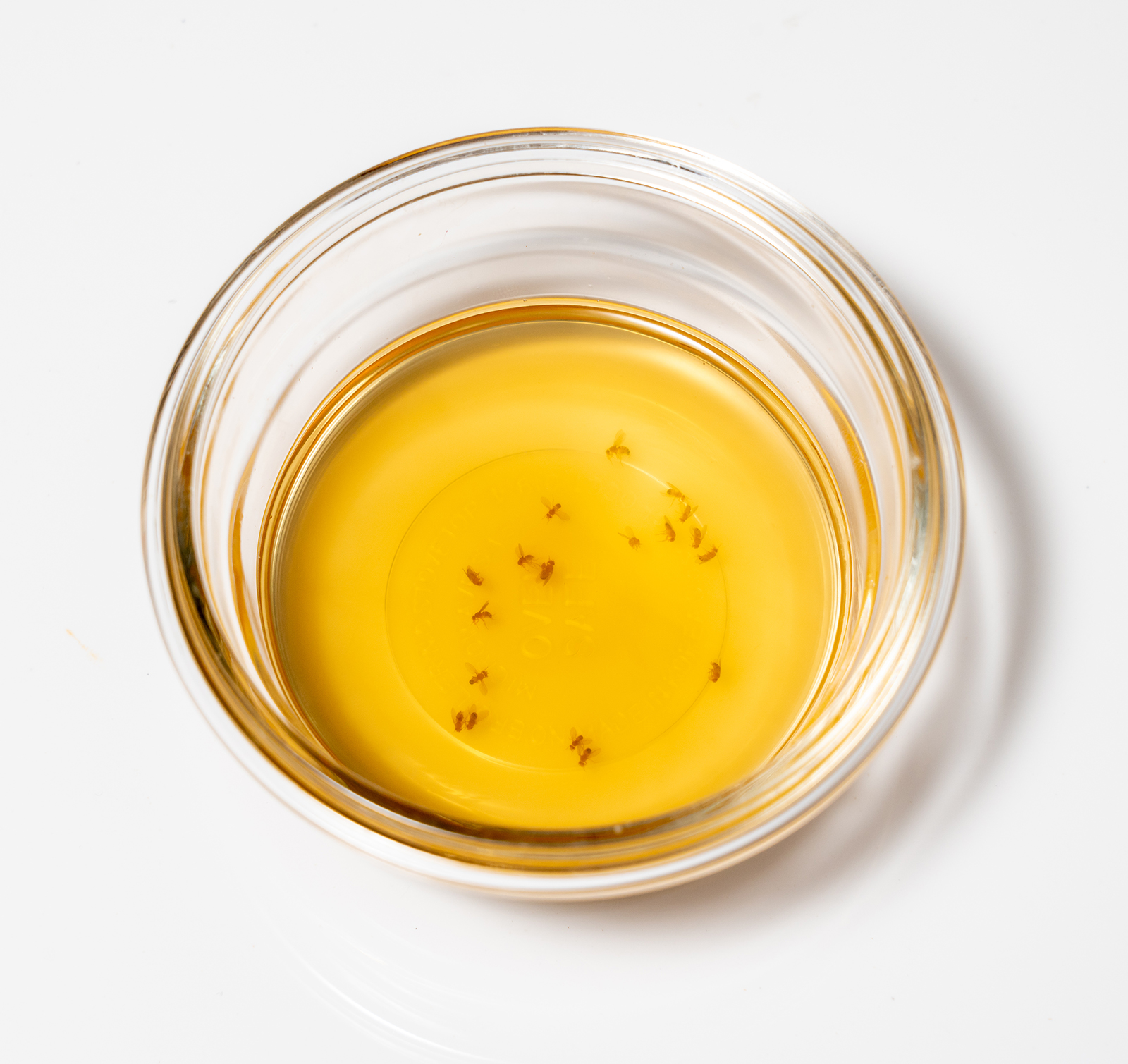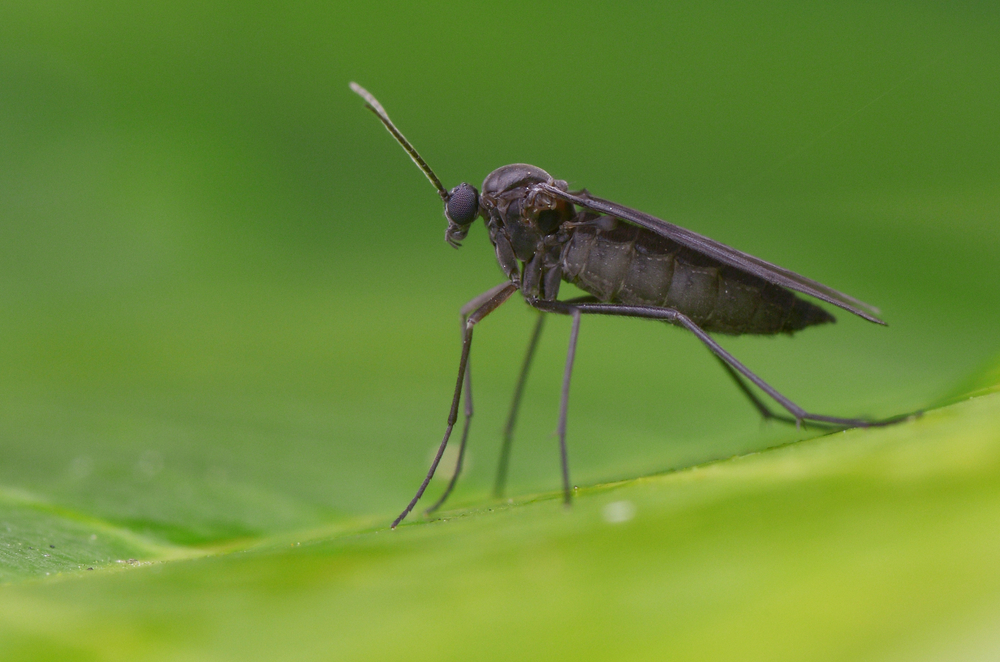
When it comes to understanding the behavior of insects such as gnats, one of the key questions that comes to mind is whether or not these pests are attracted to light. Gnats are small flying insects that can be quite bothersome, both indoors and outdoors.
There are different types of gnats, and their attraction to light varies among the species. In general, some gnats such as fungus gnats, are indeed attracted to lights. The attraction may be more pronounced in certain conditions, such as when exterior lighting attracts them from neighboring areas.
This article will examine the specific types of gnats that are attracted to light, the factors that influence this attraction, and how this information can be useful for those seeking to minimize gnat-related issues in their homes and gardens.
What Are Gnats?
Gnats are tiny, flying insects belonging to the Diptera order, which includes flies and mosquitoes. They are typically less than a ¼ inch in size and are often seen swarming in groups. Gnats can be both biting and non-biting, depending on the species.
There are various species of gnats which exhibit different characteristics and behaviors. Some of the most common type of gnats include fungus gnats, fruit flies, midges, and drain flies. Fungus gnats, for example, are drawn towards moist soil and feed on fungus and decaying organic matter. Fruit flies, on the other hand, are attracted to ripe and rotting fruits and vegetables.
Midges can be found near aquatic habitats and may be mistaken for mosquitoes due to their similar size and appearance. Drain flies, also known as moth flies, can be found near drains and pipes, where they lay their eggs in the organic matter that accumulates there.
Even though gnats are small and can be annoying, especially when found in large numbers, they play an essential role in ecosystems as a food source for other animals, like birds and bats, and can also help in the process of decomposition.
Gnats and Light Attraction
Although different species of gnats exhibit varying light-related behaviors, some of them are known to be attracted to light sources. Fungus gnats, in particular, tend to be drawn towards lights (School of Bugs). Gnats possess photoreceptors that allow them to distinguish between various wavelengths of light, which helps them navigate their environments.
Ultraviolet light is especially attractive to many gnat species, as they can most easily detect it. These gnats may be drawn to porch lights or other sources of artificial light that emit ultraviolet wavelengths.
Not all gnat species share the same attraction to light, however. For example, fruit flies, a common type of gnat, are not strongly attracted to light (Orkin). Therefore, the effectiveness of using light traps for gnat control may vary depending on the specific species present.
Why Are Gnats Attracted to Light?
In general, some species of gnats are attracted to light, while others are not. For the species that are attracted, ultraviolet light is the most attractive, followed by green-yellow light, both in daylight and darkness. Colors in the violet-blue range aren’t as appealing to them (Landscaping Planet).
Non-biting gnats, such as fungus gnats, fruit flies, moth flies, and phorid flies, are also attracted to light to varying degrees. The attraction to light for these gnats may be due to their instinctive navigation using natural light, like the sun or moon. Disorientation caused by artificial lights lead them to hover around these sources.
It is important to note that the attraction to light can differ between gnat species, with some expressing very different light-related behaviors. Understanding the specific behavior of the gnats you are dealing with can help in implementing effective control measures and minimizing their presence.
How to Prevent Gnats from Being Attracted to Lights in Your Home
Reducing the attraction of gnats to light is an effective way to prevent them from invading your living spaces. Here are some tips to help you minimize their attraction to light:
- Switch to yellow or warm-colored lights: Gnats are less attracted to yellow or warm-colored lights, as they mimic the sun’s natural light spectrum. Replace your bright white or bluish lights with these more gnat-friendly colors.
- Turn off unnecessary lights: When you don’t need bright lighting, make an effort to turn off any unnecessary lights. This makes your home less appealing to gnats and helps conserve energy.
- Use window screens: Install window screens to prevent gnats from entering your home when you have lights on. This physical barrier is an effective way to limit their access to your living space.
- Opt for LED bulbs: LED bulbs produce less heat than traditional incandescent bulbs, making them less attractive to gnats. Additionally, LEDs consume less energy and last longer, making them a more eco-friendly option.
- Remove gnat breeding sites: Gnats may be attracted to light, but they also need a suitable breeding site to thrive. Remove any potential breeding sites, such as damp soil or decaying organic matter, to reduce the population of gnats in your area.
By following these simple tips, you can effectively minimize the attraction gnats have to light in your home and reduce their presence in your living areas.
Alternative Ways to Control Gnats
One of the most efficient ways to control your local gnat population is to reduce and remove their habitats. Here, we will explore alternative methods for removing gnats that do not rely solely on their attraction to light.
1. Vinegar Trap: A combination of sugar, vinegar, and dish soap can be used as a homemade gnat trap. The mixture will attract gnats, and the dish soap will eventually cause them to drown (This Old House).
2. Bug Zapper: Although gnats are attracted to light, using a bug zapper with a specific light wavelength will help target and eliminate them more effectively.
3. Gnat Repellent Plants: Having plants like lavender, marigolds, and lemongrass in or around your home can help repel gnats due to their natural aroma that gnats dislike.
4. Essential Oils: Certain essential oils like eucalyptus, peppermint, and tea tree can act as natural gnat repellents when applied to skin or used in a diffuser.
While using light can be effective in controlling gnat populations, combining it with the alternative methods mentioned above, such as vinegar traps and bug zappers, can help achieve even better results. Remember, reducing and removing gnat habitats should always be the primary approach for long-term gnat control.

Conclusion
In summary, gnats are indeed attracted to light. Many nocturnal insects, including gnats, are known to be attracted to sources that emit large amounts of ultraviolet (UV) radiation (Shimoda, 2013). They possess photoreceptors that allow them to distinguish between different light wavelengths, with ultraviolet light being the most attractive to them.
This attraction to bright light sources can provide valuable information to homeowners when dealing with gnat infestations, both indoors and outdoors. Understanding what attracts gnats and how to use this knowledge to control and reduce infestations is essential.
Implementing strategies such as using bug zappers, setting up traps that emit UV light, or reducing the presence of bright lights in areas prone to gnat infestations can help manage and minimize gnat populations around the home. Effective control of gnats ultimately begins with understanding their behavior and preferences, like their attraction to light.
Driven by a passion for those tiny creatures that rule our world, we at Bug Domain strive to be your go-to resource for information on insects.




